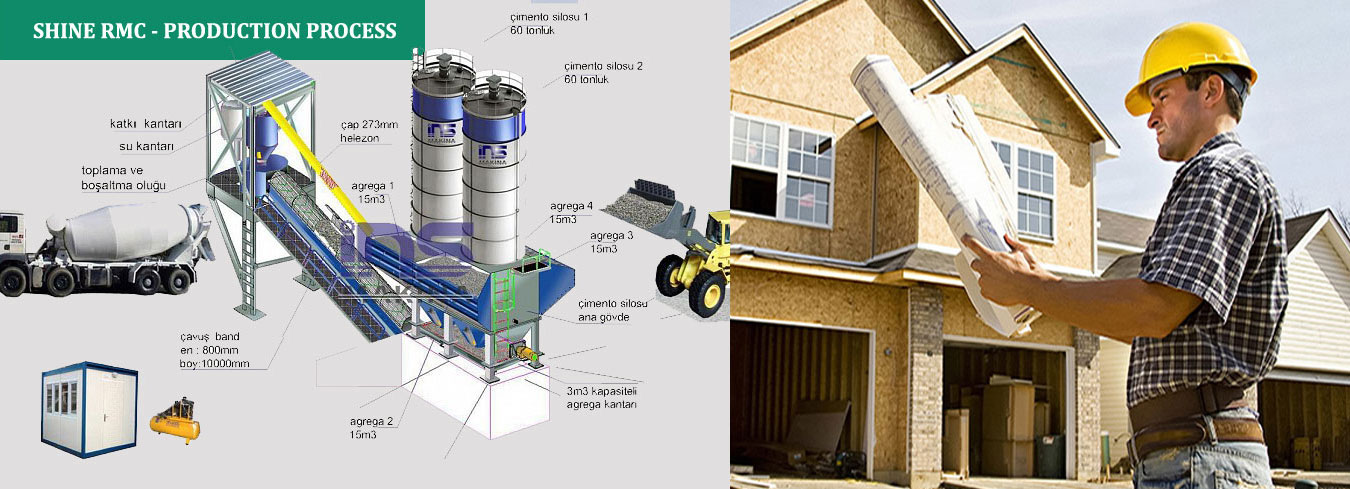Production of concrete
Concrete is a mixture of two components: aggregates and paste. The paste, comprised of cement and water, binds the
aggregates (usually sand and gravel or crushed stone) into a rocklike mass as the paste hardens.
A properly proportioned concrete mix possesses acceptable workability of the freshly mixed concrete and durability, strength,
and uniform appearance of the hardened concrete while being economical.
Procurement of raw materials
Fine aggregate consists of natural sand, manufactured sand, or a combination thereof with particles that are typically smaller than 0.2 inches. Coarse aggregate consists of either (or a combination of) gravel, crushed gravel, crushed stone, air-cooled blast furnace slag, or crushed concrete, with particles generally larger than 0.2 inches. The maximum size of the coarse aggregates is generally in the range of 3/8 to 1 ½ inches.
Finishing Air-Entrained Concrete
Admixtures are those ingredients in concrete other than portland cement, water, and aggregates that are added to the mixture immediately before or during mixing.
A wide range of admixtures are available. The table below provides a list of common types of chemical admixtures. The effectiveness of an admixture in concrete depends upon many factors including cementitious materials properties, water content, aggregate properties, concrete materials proportions, mixing time and intensity, and temperature.
Mass Concrete
hese mixtures typically have high cementitious materials contents, which results in high temperatures within the concrete. To avoid cracking and other temperature related damage to the concrete, contractors must control the temperature and temperature difference in the concrete. This can pit the schedule against the service life.
When all involved parties work together, appropriate changes can be made to achieve the desired service life with minimal impacts to the schedule. The key is an understanding of mass concrete. Selection of an appropriate concrete mixture is the first step.
Self-Cleaning Concrete
Self-cleaning buildings and pollution-reducing roadways: These may sound like futuristic ideas, but they are realities of some of today’s concrete. Recently introduced formulations of cement are able to neutralize pollution. Harmful smog can be turned into harmless compounds and washed away. Anything made out of concrete is a potential application, because these cements are used in the same manner as regular portland cements. These products provide value through unique architectural and environmental performance capabilities.
Ultra High Performance Concrete
Ultra High Performance Concrete (UHPC), also known as reactive powder concrete (RPC), is a high-strength, ductile material formulated by combining portland cement, silica fume, quartz flour, fine silica sand, high-range water reducer, water, and steel or organic fibers. The material provides compressive strengths up to 29,000 psi and flexural strengths up to 7,000 psi.
The material's unique combination of superior properties and design flexibility facilitated the architect's ability to create the attractive, off-white, curved canopies. Overall, this material offers solutions with advantages such as speed of construction, improved aesthetics, superior durability, and impermeability against corrosion, abrasion and impact—which translates to reduced maintenance and a longer life span for the structure.

